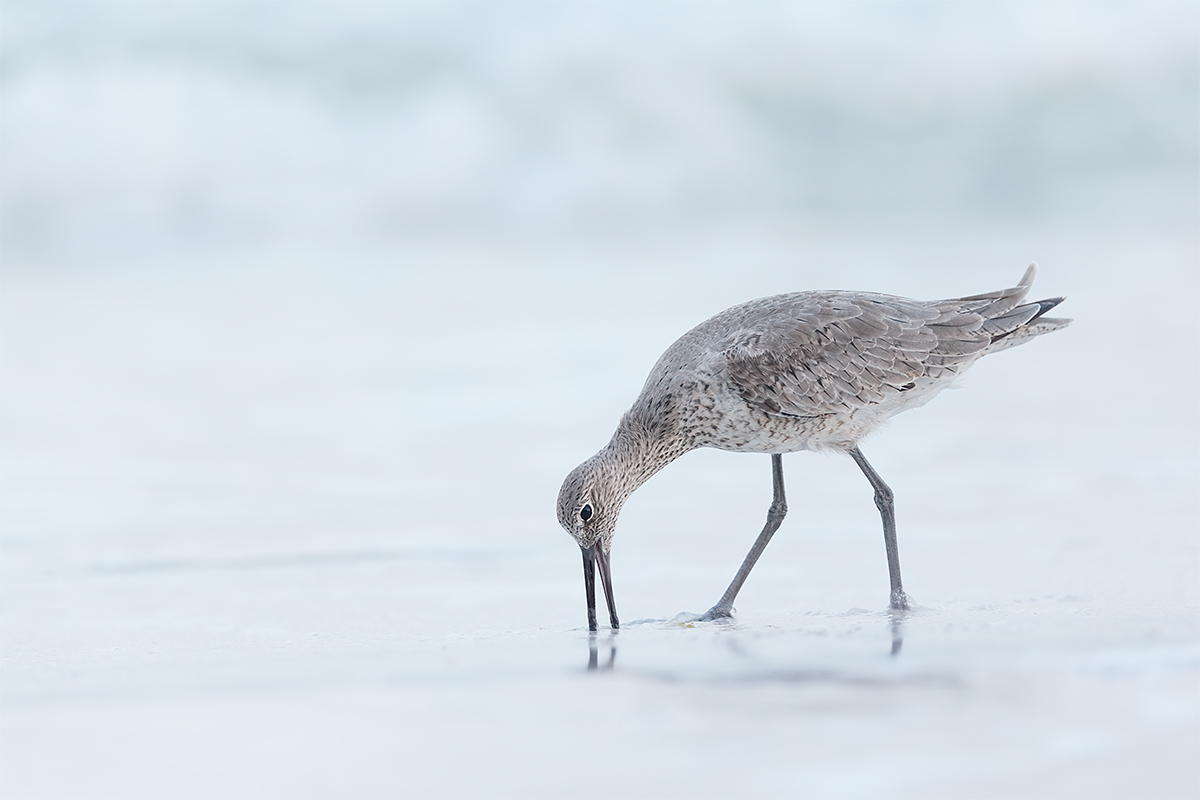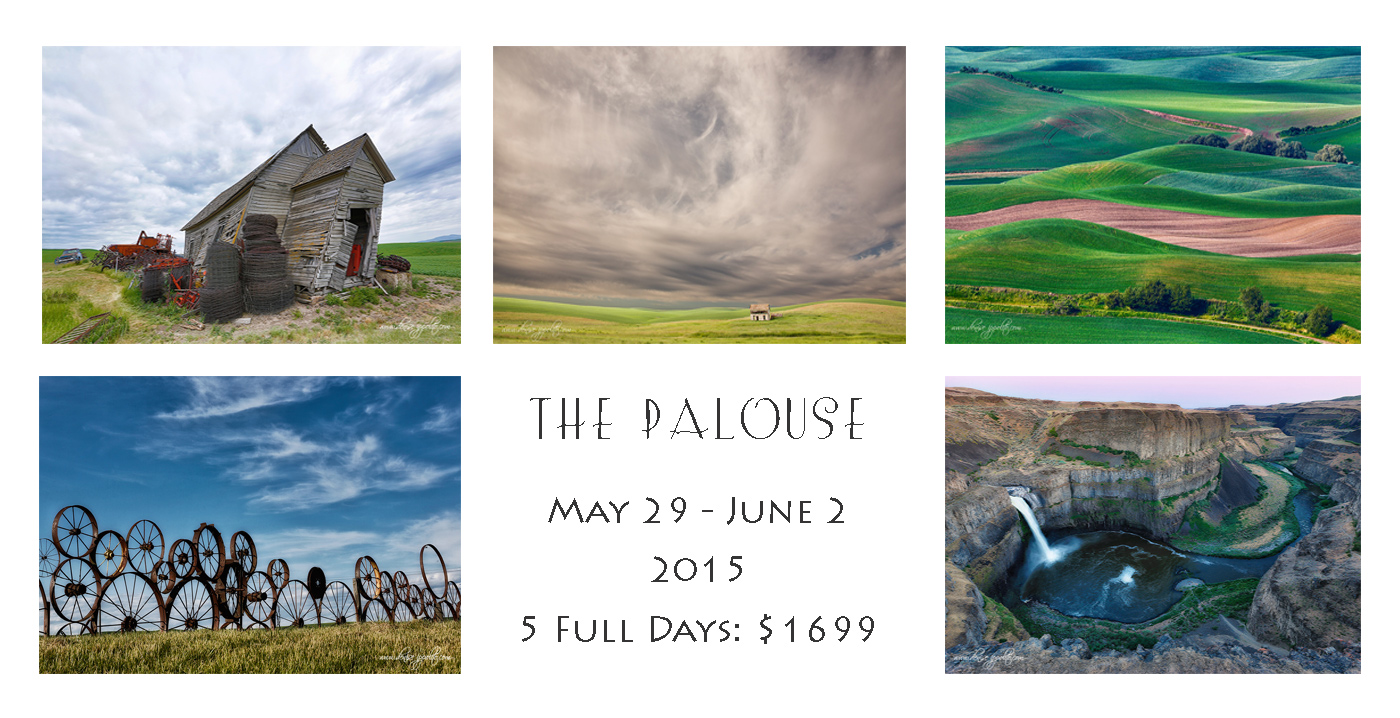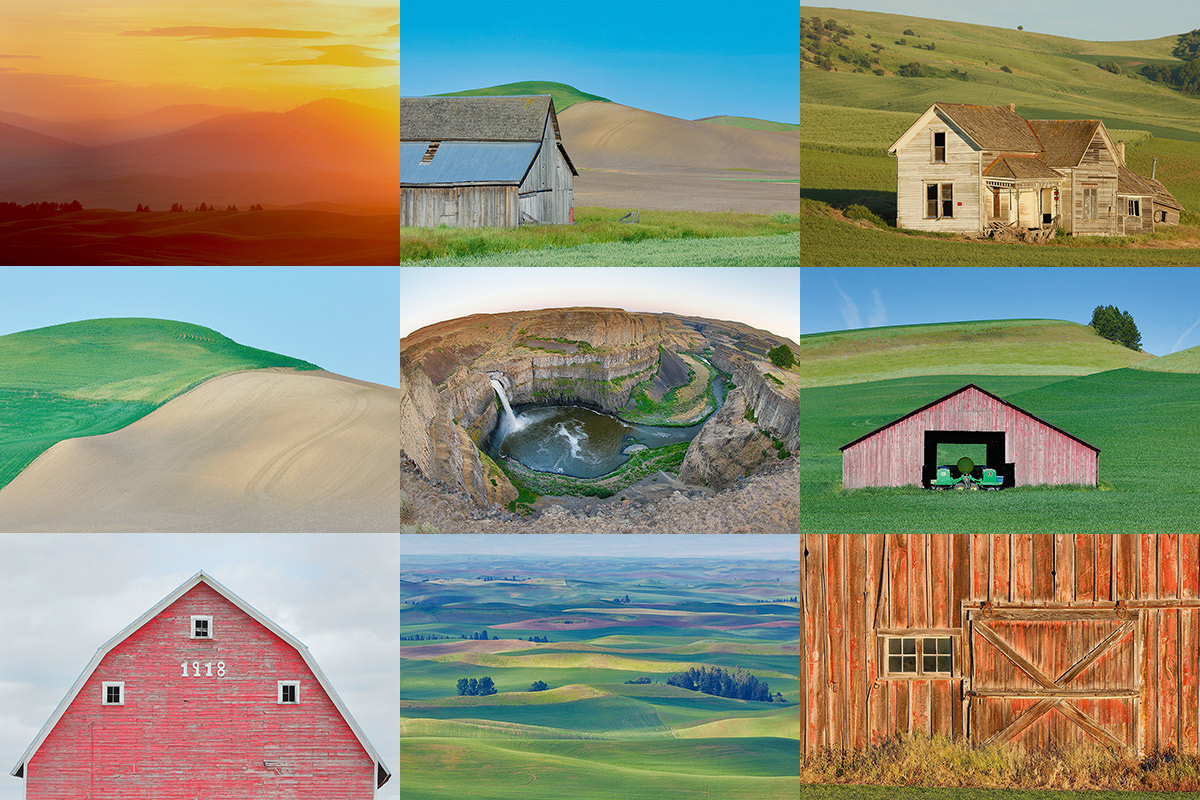Stuff
The IPT got off to a decent start despite the NW wind in the morning. This afternoon was amazing with the breeze continuing from the west, gorgeous light, and lots of tame birds including an uncommonly tame Whimbrel. Dwayne Marrott who was part of the Canon Morro Bay group flew from El Paso, TX is kindly driving my SUV back to the hotel as I work on the blog.
This blog post, the 107th in a row, took about 1 1/2 hours to prepare. It was published just after midnight on Saturday morning.
The Palouse
There is a single opening due to a cancellation on the Palouse #2 IPT. We will only be able to hold the lone remaining hotel room until next Friday so do not hesitate if you wish to learn from two great leaders. Scroll down for details.
St. Augustine Alligator Farm Short-Notice Spoonbill and Wading Bird Chicks IPT: May 4-6, 2015. TWO FULL and TWO 1/2 DAYS: $1099. Limit 8/Openings 5.
Enjoy practically private instruction. Please call the office at 863-692-0906 for St. Augustine IPT Late Registration Discount info. For complete details see the blog post here and scroll down.


Canon’s Huge Megapixel Bodies
Many of you have read about the two new Canon 50+ megapixel bodies, the Canon EOS 5DS DSLR and the Canon EOS 5DS R DSLR. The two cameras look, sound, and pretty much are quite similar. I have withheld commenting until now because I did not have a good–heck, I did not have any–understanding of the single difference between the two bodies, that being the Low-Pass Filter Effect Cancellation.
If you missed the hugely popular “Canon’s Two New 50+ Megapixel Camera Bodies/You Must Read This Before You Buy,” you can click here to catch up and learn a ton to boot.
Please Remember to use our Affiliate Links 🙂
To show your appreciation for my continuing efforts here, we ask, as always, that you use our the B&H and Amazon affiliate links on the right side of the blog for all of your purchases. B&H is recommended for you major photography gear purchases, Amazon for your household, entertainment, and general purpose stuff. Please check the availability of all photographic accessories in the BIRDS AS ART Online Store, especially the Mongoose M3.6 tripod heads, Gitzo tripods, Wimberley heads and plates, LensCoats and accessories, and the like. We sell only what I have used, have tested, and can depend on. We will not sell you junk. We know what you need to make creating great images easy and fun. And we are always glad to answer your gear questions via e-mail. I just learned that my account was suspended during my absence; it should be up and running by Monday at the latest.
I would of course appreciate your using our B&H affiliate links for all of your major gear, video, and electronic purchases. For the photographic stuff mentioned in the paragraph above we, meaning BAA, would of course greatly appreciate your business. Here is a huge thank you to the many who have been using our links on a regular basis and visiting the BAA Online store as well.
|
This image was created on the first morning of the Fort DeSoto IPT while seated with the hand held Canon EF 300mm f/2.8L IS II USM lens, the Canon Extender EF 1.4X III, and the Canon EOS-1D X. ISO 800. Evaluative metering +2 stops as framed: 1/250 sec. at f/4 in Manual mode. AWB. One AF point to the right of the center AF point/AI Servo-Surround/Shutter Button AF as originally framed was active at the moment of exposure and caught the spot where the neck meets the upper back conveniently on the same plane as the eye. Click on the image to see a larger version. Willet feeding |
What Camera Body for the Conditions?
6:22a: Stop at 7-11 for water, coffee, and snacks in pouring rain.
6:23am: The leader says, “No worries, it’s just a passing shower.”
6:30am: Exit 7-11. Rain has stopped. Lot of clouds around.
6:36am. Enter park. Flag blowing from right to left. Bad news: west wind. Pray for lots of clouds in the east. Why? northwest wind on a clear morning means that birds will be flying, landing, and facing into the wind.
6:45am Arrive at location. Lenses: 600 II, 200-400 with Internal Extender, 300 II. Camera bodies: 1D X, 7D II. Both teleconverters? What to bring?
I quickly decided on the 300 f/2.8L IS II with the 1D X and of course both TCs.
Why the 300 /f2.8L IS II?
Why the (full frame) 1D X?
Clue: the two right answers for each are closely related….
Don’t be shy; make the blog interactive and double your learning.
Feeding Shorebird Photo Strategies
When you have a shorebird at a decent distance, have a halfway decent shutter speed, and have checked your histogram, wait for the bird to lower its head to probe the sand or mud, and then hold the shutter button down for six to ten or more images. If you are at all lucky, you might get a really nice frame or two. Why hold the shutter button down? You could not react quickly enough even if you could see the great moment but most of the time you cannot even see it much less anticipate it. No crab in the image above but I love everything else about it.
|
Card and design by Denise Ippolito. Scroll down here to see lots more of Denise’s Palouse images. |
Palouse #1. The Palouse A Creative Adventure/BIRDS AS ART Instructional Photo-Tour (IPT)/Eastern Washington State. May 29-June 2, 2015/5 Full Days: $1699/Limit 12 photographers/Sold out.
|
Card and design by Arthur Morris/BIRDS AS ART. |
The Palouse A Creative Adventure/BIRDS AS ART Instructional Photo-Tour (IPT)/Eastern Washington State. June 5-9, 2015/5 Full Days: $1699/Limit 12 photographers/One Opening Due to a Cancellation.
Rolling farmlands provide a magical patchwork of textures and colors, especially when viewed from the top of Steptoe Butte where we will likely enjoy spectacular sunrises and possibly a nice sunset or two. We will photograph grand landscapes and mini-scenics of the rolling hills and farm fields. We will take you to some really neat old abandoned barns and farmhouses in idyllic settings. There is no better way to improve your compositional and image design skills and to develop your creativity than to join us for this trip. Two great leaders: Denise Ippolito and Arthur Morris. Photoshop and image sharing sessions when we have the time and energy…. We get up early and stay out late and the days are long.
After 6 days of back-breaking scouting work in early June 2014 we found all of the iconic locations and, in addition, lots of spectacular new old barns and breath-taking landforms and views. We will teach you what makes one situation prime and another seemingly similar one a waste of your time.
What’s included: In-the-field instruction, guidance, lessons, and inspiration, our newfound but very extensive knowledge of the area, all lunches, motel lobby breakfasts, and Photoshop and image sharing sessions when possible.
You will learn and hone both basic and advanced compositional and image design skills. You will learn to get the right exposure every time. You will learn to develop your creative eye. You will learn the basics of HDR (high dynamic range) photography. You will learn a variety of in-camera creative techniques; Canon 5D Mark III bodies are a plus. And most importantly you will learn to see the situation and to create a variety of top-notch images. Do see both of our blogs for lots more on that in the coming weeks. You will learn how the quality and direction of light combine to determine the success of your images. And–please don’t gasp–we will be working quite a bit with sidelight when creating landscapes. Lastly, we will be touching on infrared photography.
A non-refundable $699 deposit is due now. The balance will be due on January 29, 2015. If we do not receive your check for the balance on or before the due date we will try to fill your spot from the waiting list. Whether or not your spot is filled, you will lose your deposit. If not, you can secure your spot by paying your balance.
With the unpredictable nature of the photography business, I have not said this often lately, but it seems quite likely that this one will fill up very quickly. Please let me know via e-mail that you will be joining us. Then you can either call Jim or Jennifer at 863-692-0906 during business hours or send us a check; the latter is preferred.
Please send your deposit check made out to “Arthur Morris” to us at Arthur Morris/BIRDS AS ART, PO Box 7245, Indian Lake Estates, FL, 33855. If you have any questions, please feel free to contact me via e-mail.
Be sure to like and follow BAA on Facebook by clicking on the logo link upper right. Tanks a stack!
Support the BAA Blog. Support the BAA Bulletins: Shop B&H here!
We want and need to keep providing you with the latest free information, photography and Photoshop lessons, and all manner of related information. Show your appreciation by making your purchases immediately after clicking on any of our B&H or Amazon Affiliate links in this blog post. Remember, B&H ain’t just photography!
Amazon.com
Those who prefer to support BAA by shopping with Amazon may use this link:
Amazon Canada
Many kind folks from north of the border, eh, have e-mailed stating that they would love to help us out by using one of our affiliate links but that living in Canada and doing so presents numerous problems. Now, they can help us out by using our Amazon Canada affiliate link by starting their searches by clicking here. Many thanks to those who have written.
Typos
In all blog posts and Bulletins, feel free to e-mail or to leave a comment regarding any typos or errors. Just be right :).

















What Elinor said. 🙂
Concerning the lenses, my guess is that the choice is due to the fact that the 300 2.8 II L is much easier to hand held than the 200-400 f4 L or the 600 f4 L. Also, the minimum focus distance of the 300 2.8 II is about 2m (like the one of the 200-400 f4, but this lens is much heavier), whilst the 600 f4 has a minimum focus distance of about 4.5m.
Also, if you work at the minimum focusing distance, with the 1dx you avoid the risk that the field of view is too tight.
Both body and lens are good in low light.
You want lots of cloud in the E or SE to hide any sun, because with a W or NW wind the birds will be facing W or NW you will be shooting toward them to the E or SE and into the sun if it shows.
300 f2.8 to gather one more stop of light than the f4 200-400 on a cloudy day. And, for flight photos, if I remember correctly you say wide open is fine. With a 2x extender you will have 600mm anyway with, again, one more stop of light.
In low light, the full frame camera will have less noise due to its larger sensor pixels which gather more light than smaller sensor pixels as in the 7D II.
Maybe due to the 1D being better able to withstand rain & sand?
I might have been inclined to take the 200-400 but I have yet to see one much less own one, however if there is sand flying around I wouldn’t want to be changing converters.
Still amazed you can get that close to a shorebird.
Wish I had taken the 2-4 yesterday afternoon…. Will do so all day today. Warren Rudd used his 70-200/2X III/7D II all day with great success. Moat of the birds at DeSoto are mega-tame…. artie
HeyWarren,
I remember seeing the 2-4 for the first time. When compared with lenses I was used to seeing it’s seemed like a huge beast of a thing.
The guy holding it looked rather foolish. And at NZ$ 17 k , it’s well beyond the reach of the casual purchaser’s pocket book here. The owner was out on a zoo trip , well over 70 and looked like he could barely hold it up. I thought ” he must be a real photographer… He has such a big lens.”
As it turns out I was wrong about most of that.
I purchased the new 100-400 ll this week. Itching to get out and shoot it as soon as my camera body is repaired and returned.
Regards
David
Hi Artie,
So birds are flying and landing into the northwest wind. To shoot them head on you have to face into the rising sun. So praying for clouds in the east makes sense, to soften the hard light otherwise you are likely to finish up with a bird silhouette . Trouble with getting good exposure on the near side if the bird is back lit, somehow leads to your gear choice.
So the 300 f2.8 is selected for it focal length with or without TCs and it’s fast aperture. Why the focal length choice? I figure you plan to let the birds come close to you or fly past you to the south while you shoot with the sun off your left shoulder. Why the 2.8 over the f4 ? Maybe faster shutter speed for flying birds.
Why the 1Dx? You might have decided that you don’t need the extra reach of the crop sensor since you have 300 , 420, 600 and 840 covered with your Lense/TC choice.
Yes to 300, 420 and 600, but 840 with stacked TCs is not a viable option. artie
So maybe you are looking for greater ability to handle hi ISO for increased shutter speed for reason one.
And perhaps you want either better focus tracking or faster focusing for reason two
One word encompasses both lens and body choices .
PERFORMANCE.
Well here’s hoping I haven’t missed something really obvious.
Kind regards
David
PS,
The obvious is that you are hand holding, so no tripod for the image posted.
A very pleasing image too. And you were seated! The 600 would not be as easy to do this with..
🙂
D
Thanks on all counts. Hand holding the 600 II is actually fairly easy to do for most folks if they sit and use my knee-pod technique. But there is much more freedom of movement with the 300II than the 600 II. a